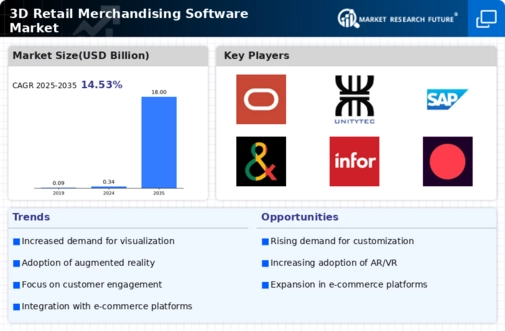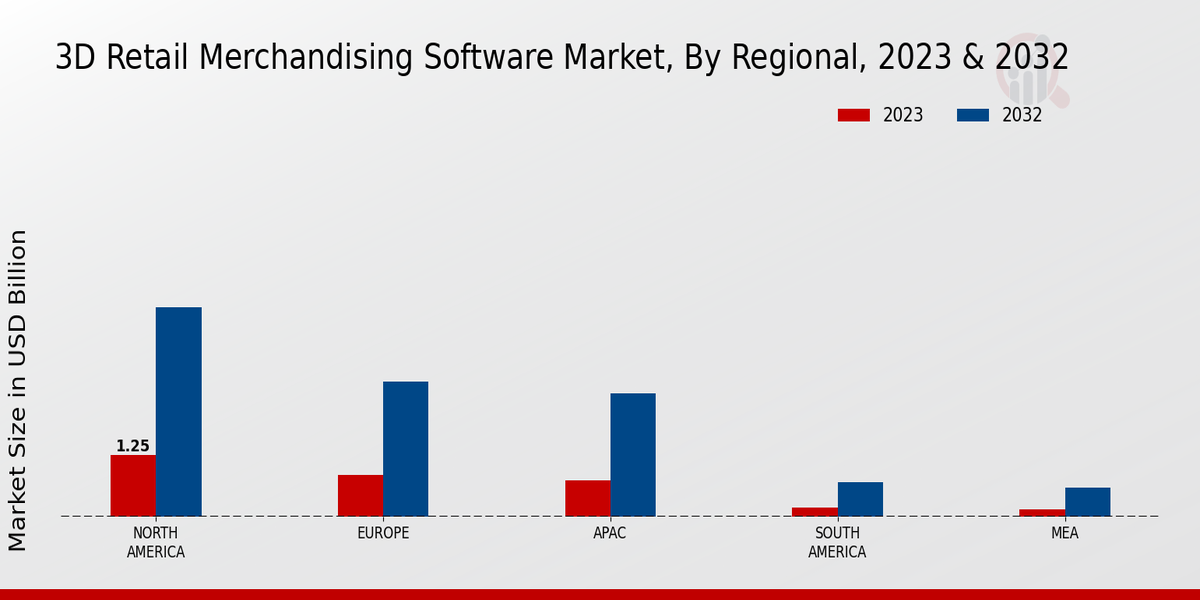Market Growth Visualization
Expansion of Retail Analytics
The expansion of retail analytics is significantly influencing the Global 3D Retail Merchandising Software Market Industry. Retailers are increasingly relying on data-driven insights to inform their merchandising strategies. By integrating analytics with 3D software, retailers can assess customer behavior, preferences, and trends, allowing for more informed decision-making. This synergy between analytics and 3D merchandising enhances the effectiveness of marketing campaigns and product placements, ultimately leading to improved sales performance. The growing emphasis on data analytics is likely to propel the adoption of 3D solutions in the retail sector.
Growing E-commerce Integration
The integration of 3D retail merchandising software with e-commerce platforms is a driving force in the Global 3D Retail Merchandising Software Market Industry. As online shopping continues to gain traction, retailers are leveraging 3D software to create virtual showrooms that replicate physical store experiences. This integration not only enhances product visualization but also improves customer engagement, leading to higher conversion rates. The market's growth trajectory suggests that as e-commerce evolves, the demand for sophisticated merchandising solutions will likely increase, further solidifying the role of 3D software in retail.
Increased Focus on Sustainability
Sustainability is becoming a critical consideration in the Global 3D Retail Merchandising Software Market Industry. Retailers are increasingly adopting eco-friendly practices, and 3D merchandising software can aid in optimizing product displays to minimize waste and enhance resource efficiency. By utilizing virtual simulations, retailers can experiment with various layouts and designs without the need for physical prototypes, thereby reducing their environmental impact. This focus on sustainability aligns with consumer preferences for environmentally responsible brands, potentially driving further adoption of 3D solutions in retail.
Rising Demand for Enhanced Customer Experience
The Global 3D Retail Merchandising Software Market Industry experiences a notable surge in demand as retailers increasingly prioritize enhanced customer experiences. By utilizing 3D merchandising software, retailers can create immersive shopping environments that engage customers more effectively. This shift is evidenced by the projected market growth from 0.34 USD Billion in 2024 to an anticipated 18.0 USD Billion by 2035, indicating a robust CAGR of 43.48% for the period from 2025 to 2035. Such advancements not only attract consumers but also foster brand loyalty, as shoppers are drawn to innovative and interactive retail experiences.
Technological Advancements in Retail Solutions
Technological advancements play a pivotal role in propelling the Global 3D Retail Merchandising Software Market Industry forward. Innovations in augmented reality (AR) and virtual reality (VR) enable retailers to visualize products in a three-dimensional space, enhancing the shopping experience. These technologies facilitate better product placement and merchandising strategies, which can lead to increased sales. As retailers adopt these cutting-edge solutions, the market is expected to expand significantly, reflecting the industry's adaptability to emerging technologies and consumer preferences.














